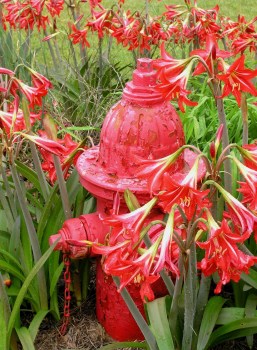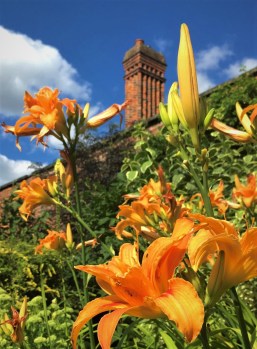Passalong plants are not for everyone
Published 9:28 am Wednesday, May 8, 2024
By Felder Rushing
Garden Columnist
Passalong plants are not for everyone. Some are too mundane for modern tastes, eschewed by bored gardeners looking for new thrills, or don’t look enticing in little pots on garden center racks, or are a bit untidy and need a little containing.
That said, there are important reasons to keep them around, including their diversity, strong local sense of place, history, and nostalgia. Most are hardy survivors compared with showier but more fickle modern fare.
This came to me last week in a frustrating “taken aback moment” with a new head gardener in a MidSouth botanic garden’s heritage plant display. I noticed that the heirloom “Passalong Plants” bed was taken up with hybrid tulips, which, almost needless to say, are not widely shared around here where most of those cold-climate beauties flower just once, then peter out; very few ever come back the next year much less become cherished passalongs.
When I suggested she go with more reliable and meaningful classic Southern heirlooms as teaching opportunities, I was told matter-of-factly that she thinks they are not as attractive to visitors, and some are too much trouble for her to deal with because they tend to multiply too quickly.
I did a double take. Ease of propagation is one of the most important characteristics of a passalong plant; doesn’t matter how popular or well-adapted or easy to manage by a wide range of diverse gardeners regardless of skill, unless it is easy to share it won’t go very far. My thinking is, if they move around a bit, that’s good – have volunteers divide them and make them available for the annual plant sales. Spread the wealth!
By the way, there is a subtle difference in the meaning of these terms: Heirloom refers to anything inherited or shared; garden antique semi-officially means over fifty years old; and heritage connotes a historic, cultural, or emotional connection to people, places, or events. Granny’s concrete chicken and flower bulbs are all three.
Oddly enough, most of the most commonly grown heirloom plants I see all over Mississippi are hard to find commercially; you gotta get them from someone else’s garden. Just with bulbs alone I’m thinking milk-and-wine Crinum lilies, magenta hardy gladiolus, “twin sisters” daffodils, Johnson’s Red amaryllis, tall white Philippine lilies, variegated painted arum, pink “naked lady” Lycoris… And that’s not even touching the hundreds of easy to divide perennials, root-able antique roses and other shrubs, potted plants, succulents, and self-seeding annuals.
Best example worldwide is the ancient double-flowering (and edible) orange daylily, which admittedly some gardeners don’t value highly. But I have photographed it across five continents, from small towns to around rural farmhouses, to castles and upscale botanic gardens. This in spite of how, like mules and seedless watermelons, it cannot make its own seeds. It has to be spread by people, hand to hand, plant by plant. Yet it is grown all over the globe, down from the very first one to be dug and shared over three thousand years ago.
And when I see it I feel connected. This is what belongs in a heritage garden, regardless of convenience for the caretaker. It’s keeping the old plants going, savoring their history and memories, reminding newbies of the plants shared by widely diverse gardeners, brought from wherever they grew up gardening. Those which survive through thick and thin, and all but beg us to keep sharing them with others, lest they disappear under the onslaught of the latest temporary flashes in the pan.
Where better to show them off, to keep their flames going, than in a public passalong plant display?
Felder Rushing is a Mississippi author, columnist, and host of the “Gestalt Gardener” on MPB Think Radio. Email gardening questions to rushingfelder@yahoo.com.







